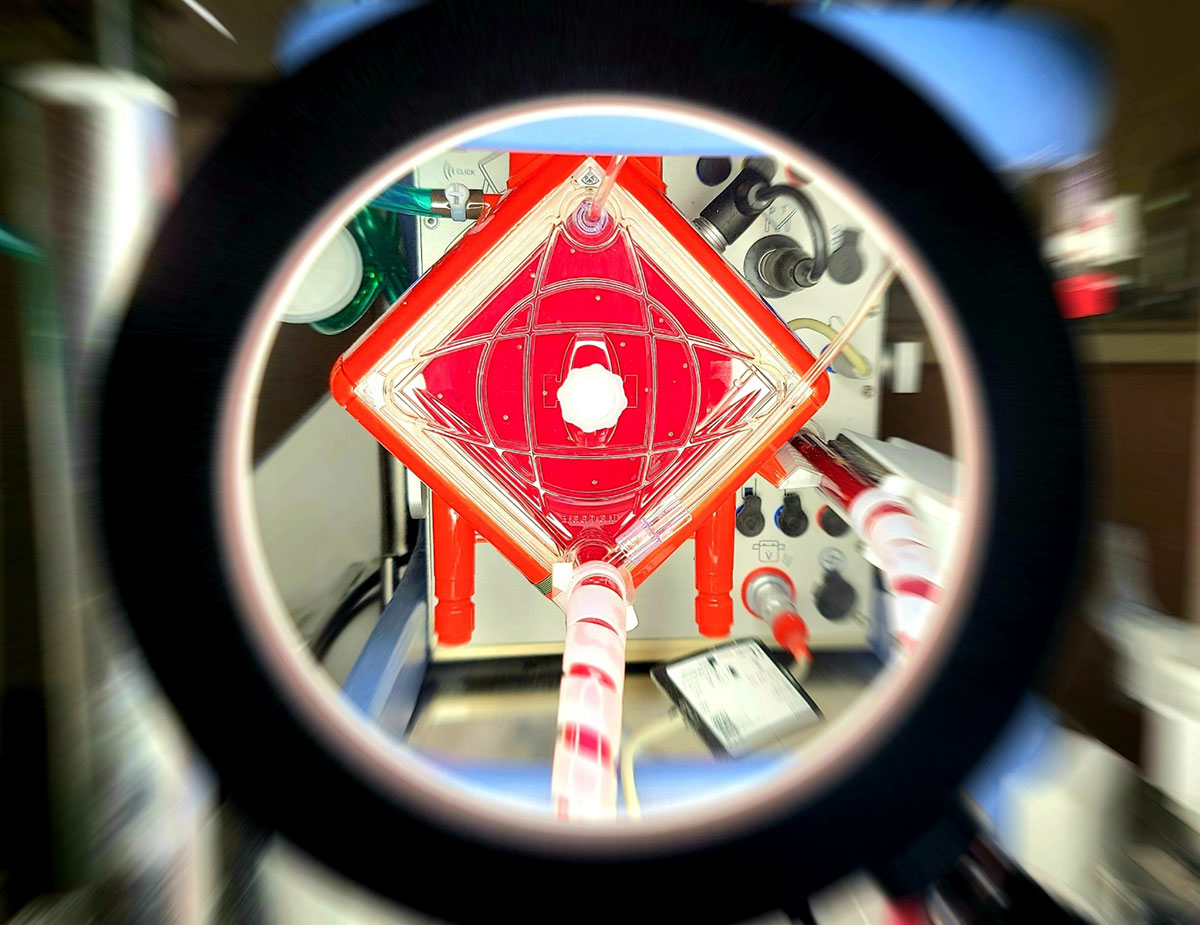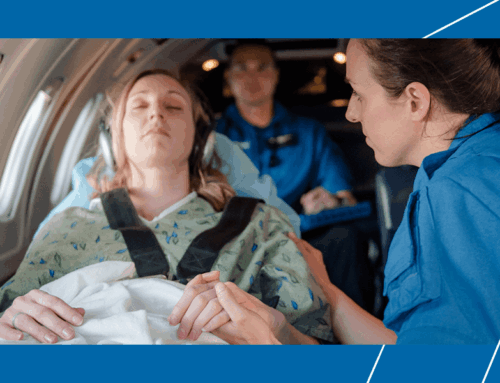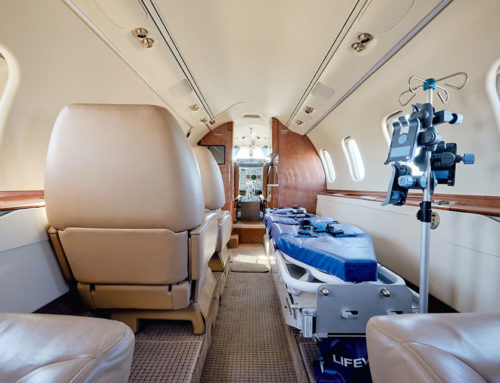Key Takeaways:
- ECMO transports are highly complex and require a specialized, certified ECMO team to safely move patients with severe heart or lung illnesses.
- Successful ECMO transports demand meticulous planning, risk mitigation, and constant monitoring due to the delicate nature of the ECMO circuit and the patient’s condition.
- A dedicated air ambulance provider should have the same high-quality equipment and expertise as a medical facility to ensure seamless and safe ECMO transport.
Patients who have been placed on ECMO have a severe and life-threatening illness that stops their heart or lungs from working properly. ECMO is utilized to pump and oxygenate blood outside of the human body to allow the heart and lungs to rest.
Occasionally, patients on ECMO need to be transported to another facility for extra care specific to their needs. This is possible and can be done with a specialized ECMO team. These patients can be transported via ground ambulance, helicopter, or fixed-wing aircraft. The distance of the transport will decide which vehicle is used, the longest distance needing a fixed-wing Learjet aircraft.
Transporting ECMO Patients
AirCARE1 is highly qualified and experienced in providing specialized fixed-wing air ambulance transportation via Learjet for patients who are receiving extracorporeal membrane oxygenation (ECMO). To perform these extremely complicated and delicate transports we always partner with a specialized, highly skilled, and certified ECMO team. Together we can safely transport ECMO patients to any domestic and international locations throughout North and South America.
Successfully transporting a critically ill patient requiring extracorporeal membrane oxygenation (ECMO) is a complex endeavor. ECMO support is a very specialized treatment that has inherent risks during a patient transport as there are many unique considerations needed for a successful flight. Risk concerns of each ECMO patient should be identified and solved before each transport to mitigate those risks during the transport.
Every ECMO transport is different and has its own unique set of challenges. With any patient on ECMO there is simply no room for error, as even the slightest movement of either the patient or cardiac circuit can be fatal. Great care needs to be utilized to ensure a smooth transport via a ground ambulance to and from the facilities or the airport, as well as loading the patient in and out of an aircraft.
Specific to an air ambulance transport, special attention needs to be given to the flight environment’s effect on the patient. The flight environment leads to unique considerations with respect to atmospheric pressure, oxygenation, temperature, noise and vibration, and G-Forces during acceleration and deceleration. More seriously, gas expansion can lead to more life-threatening adverse effects on the patient. If air bubbles are missed, extreme care needs to be taken when switching the ECMO circuit over to the transport ECMO team’s circuit to ensure there is not even the smallest micro air bubbles in the system, which if left unnoticed, could flow to various parts of the body, and cause major damage.
The Importance of a Full ECMO Transport Team
Successful ECMO flights take a highly trained and well-organized team who have a methodical approach to preparing the patient for transport. This team should be larger than a typical transport team with extra medical crew members to help manage and monitor the patient through the entire flight. We recommend an ECMO team that consists of cardiac perfusion specialists and three (versus the usual two) medical flight crew members including nurses and paramedics who are all trained and experienced in ECMO transports.
It is imperative the team works together and communicates effectively during the transport to ensure a safe and positive outcome for the patient. Equally important, each ECMO transport team needs to have a team lead to ensure the preparation process is meticulously adhered to in order to prevent any inadvertent mishaps. Movement and conversation can then be highly controlled to maintain focus on the tasks at hand. During the transport, the patient is continuously monitored, and a medical crew member is exclusively assigned to ensure the patient does not become extubated at any point.
ECMO Equipment
An Air Ambulance provider should have the same quality equipment ready and prepared for an ECMO patient as they have in their medical facility. This includes but is not limited to a transport stretcher system, infusion pumps, ventilators, monitors, and lastly ECMO circuits.
Extreme care needs to be taken when switching the ECMO circuit over to the transport ECMO team’s circuit to ensure there is not even the smallest micro air bubbles in the system, which if left unnoticed can cause major damage. Multiple eyes should always be on the circuit to identify any possible air bubbles.
Read More Patient Transport Resources:
- High Flow Oxygen Therapy
- Pain Management On Long-Range Flights
- Common Reasons For Long-Range Medical Patient Transfers
- How To Help Your Patient With A Medical Transport




